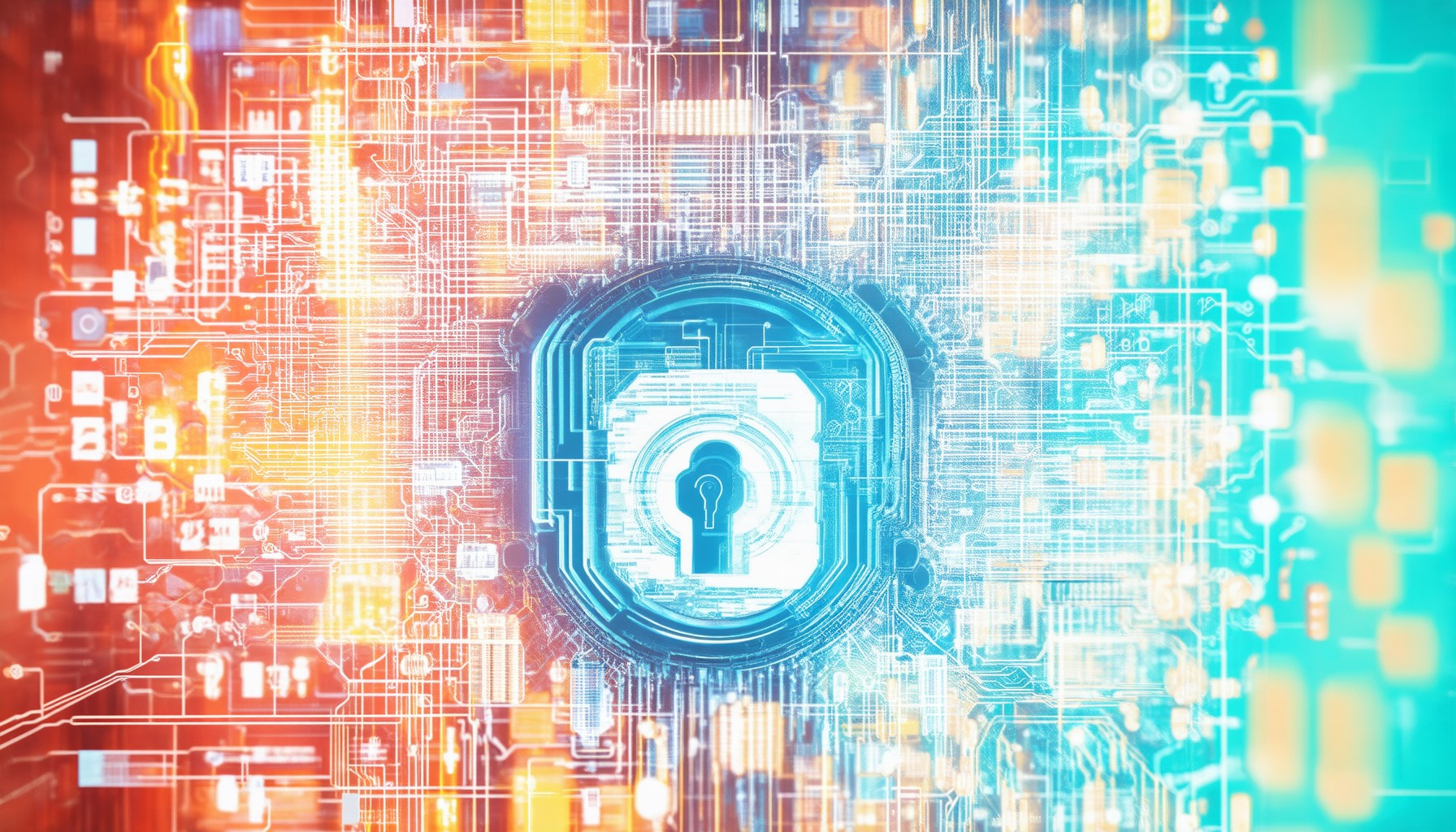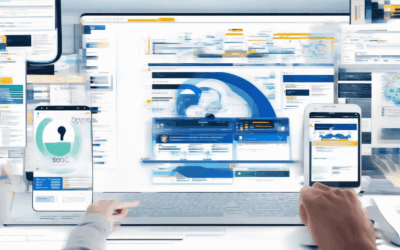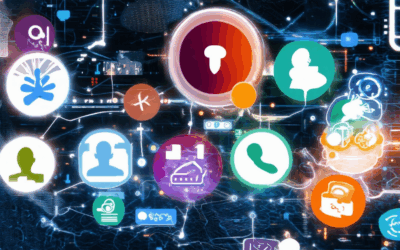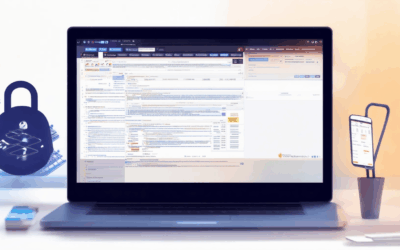In today’s increasingly connected world, safeguarding sensitive information has become paramount. Digital security measures are essential tools for individuals and organizations alike, offering robust protection against rising cyber threats. From encrypting data to implementing strict access controls, businesses and individuals must stay ahead of potential breaches. Whether it’s securing corporate networks, protecting personal devices, or ensuring compliance with regulations, understanding and deploying effective cybersecurity measures is no longer optional. This guide delves into the key strategies and best practices needed to fortify your defenses, explore advanced encryption techniques, and establish reliable monitoring systems. By equipping yourself with the knowledge of the 5 Cs of cybersecurity—consistency, configuration, compliance, controls, and collaboration—you can build a resilient framework that withstands modern threats. Stay informed and proactive with our comprehensive overview of digital security measures designed to protect your sensitive information in an ever-evolving digital landscape.
Key Takeaways
– Implement Regular Software Updates: Keep your systems secure with the latest patches to avoid vulnerabilities.
– Use Multi-Factor Authentication (MFA): Enhance your cybersecurity by requiring additional verification for access.
– Adopt Network Segmentation: Limit network exposure to contain potential threats effectively.
– Encrypt Sensitive Data: Protect your information securely, no matter where it’s stored or transmitted.
– Conduct Security Awareness Training: Educate your team to reduce risks related to human error.
- Ensure Confidentiality: Protect sensitive information from unauthorized access.
- Maintain Data Integrity: Keep your data accurate and trustworthy to build user trust.
- Ensure System Availability: Make sure your services are accessible when needed for smooth operations.
- Verify User Authentication: Secure access by checking the identity of users and devices.
- Build Security Assurance: Continuously monitor and improve your security measures to stay ahead of threats.
- Secure Network Communications: Use strong encryption like WPA3 for reliable and safe connections.
- Protect Against Vulnerabilities: Regularly update apps to fix security flaws and prevent breaches.
- Safeguard Data Privacy: Comply with regulations like GDPR to protect personal information.
- Enhance Device Protection: Use antivirus software and device encryption to keep endpoints secure.
- Strengthen Cloud Security: Implement tools like AWS IAM for controlled access to cloud data.
- Manage User Identities: Use multi-factor authentication to limit unauthorized access.
- Leverage Threat Intelligence: Monitor network traffic to detect and respond to potential attacks early.
Visit BlindBrowser.com for detailed guides and tools to enhance your cybersecurity efforts.

Examples of Digital Security Measures
Digital security measures are essential to protect sensitive information and ensure safe online interactions. Here are some common examples:
- Two-Factor Authentication (2FA) : Adding an extra layer of security beyond a password, often via SMS codes or authenticator apps.
- Encryption : Using encryption to convert data into a coded format that can only be accessed by authorized parties.
- Antivirus Software : Installing and regularly updating software to detect and remove malicious programs like viruses and ransomware.
- Physical Security Measures : Using Faraday cages to shield electronic devices from tracking signals and ensuring devices are physically secure.
- HTTPS Usage : Always accessing websites securely using HTTPS to encrypt data during transmission.
- Access Control : Restricting access to sensitive information to only authorized individuals and enforcing strict permissions.
- Security Audits : Periodically reviewing systems and networks to identify and fix vulnerabilities.
- Virtual Private Networks (VPNs) : Utilizing VPNs to mask IP addresses and protect online activities, especially while browsing publicly accessible networks.
- Regular Backups : Creating regular backups of important data to restore it in case of breaches or data loss.
- Employee Training : Providing ongoing training to employees on recognizing phishing attempts and securing sensitive company information.
These measures help safeguard against unauthorized access, data breaches, and other cyber threats. By adopting these practices, individuals and organizations can significantly enhance their digital security posture.
What are the 5 areas of digital security?
Here are the five primary areas of digital security, each playing a crucial role in safeguarding information and systems:
- Management and Risk Management
- Establishing robust governance frameworks, such as NIST or ISO 27001, to guide security practices.
- Implementing asset management systems to track and secure critical resources.
- Enforcing strict access control measures to limit unauthorized access.
-
Continuity Management
- Developing comprehensive disaster recovery plans to restore operations swiftly after incidents.
- Creating incident response protocols to minimize downtime and data loss during breaches.
- Regularly testing backup systems to ensure data integrity and availability.
-
Cybersecurity
- Deploying network security measures like firewalls and intrusion detection systems.
- Encrypting data both at rest and in transit to prevent unauthorized access.
- Monitoring network traffic for suspicious activities and potential threats.
-
Data Protection
- Classifying data based on its sensitivity level to apply appropriate security measures.
- Encrypting sensitive information stored on devices and servers.
- Implementing secure backup solutions to prevent data loss.
- Adhering to regulations like GDPR and CCPA to protect personal data.
-
Information Security
- Securing sensitive information through proper handling and storage practices.
- Limiting access to data based on roles and responsibilities to reduce exposure.
- Providing regular security awareness training for employees to mitigate human error risks.
- Ensuring compliance with industry standards like HIPAA and PCI-DSS.
By focusing on these five areas, organizations can significantly enhance their digital security posture, protecting against a wide range of threats and ensuring business continuity.

Examples of Security Measures
Security measures are essential to protect sensitive information, prevent unauthorized access, and safeguard digital assets. Here are some common examples:
- Strong Passwords: Use complex combinations of letters, numbers, and symbols to create unique passwords for each account.
- Two-Factor Authentication (2FA): Add an extra layer of security by requiring a second form of verification, such as a code sent to your phone.
- Data Encryption: Secure data through encryption methods to ensure it cannot be read by unauthorized parties.
- Regular Software Updates: Keep systems and applications updated to patch vulnerabilities and enhance security.
- Firewall and Antivirus Software: Use these tools to monitor and block malicious traffic and protect against known threats.
- Physical Security Measures: Lock down devices, use security cables, and store sensitive information in secure locations.
- Security Audits: Periodically review systems and processes to identify and address potential security gaps.
- Virtual Private Network (VPN): Encrypt internet traffic to protect data when using public or shared networks.
- Phishing Awareness Training: Educate users to recognize and avoid phishing attempts through email, messages, or websites.

What Are the Five Security Measures in Cybersecurity?
Ensuring robust cybersecurity requires a multi-layered approach to safeguard sensitive data, systems, and networks. Here are five essential security measures:
- Regular Software Updates and Patch Management: Keeping software applications, operating systems, and hardware up-to-date is critical. Manufacturers regularly release patches to fix vulnerabilities that could be exploited by hackers. Failing to apply these updates can leave systems exposed to attacks.
- Strong Authentication and Access Control: Implementing multi-factor authentication (MFA) ensures that accessing critical systems requires more than just a password. Limiting access to authorized personnel further reduces the risk of unauthorized breaches.
- Network Segmentation: Dividing a network into separate segments prevents attackers from gaining control over the entire infrastructure. By limiting connectivity, potential threats are contained, reducing the spread of malware and phishing attempts.
- Data Encryption: Protecting sensitive information through encryption ensures that even if data is intercepted, it cannot be read or used maliciously. This is particularly important for data stored on devices or transmitted over public networks.
- Security Awareness Training: Educating employees and users about cybersecurity best practices helps prevent common mistakes, such as falling for phishing scams or weak passwords. Regular training programs can significantly reduce risks associated with human error.
By implementing these measures, organizations can create a more secure environment, mitigate potential threats, and ensure compliance with regulatory standards. Remember to always stay informed about emerging threats and adapt your security protocols accordingly.
What are the 5 C’s of Cyber Security?
The 5 C’s of cybersecurity are fundamental principles that guide the protection of digital assets. These principles ensure that systems, data, and networks are secure, resilient, and available. Here’s a breakdown of each:
- Confidentiality
Ensures that sensitive information is protected from unauthorized access. This principle is critical in safeguarding data, whether it’s personal, financial, or classified. Without confidentiality, sensitive information could be leaked or misused, leading to significant risks. - Integrity
Guarantees that data remains accurate, complete, and trustworthy. Integrity ensures that data hasn’t been altered or corrupted by unauthorized parties. This is essential for maintaining trust in digital systems and transactions. - Availability
Ensures that authorized users can access the data and services they need when they need them. Availability is crucial for businesses and individuals relying on digital platforms to operate smoothly and efficiently. - Authentication
Verifies the identity of users, devices, or applications accessing a system. Authentication prevents unauthorized access and ensures that only legitimate users can interact with sensitive data or systems. - Assurance
Refers to the confidence that a system or process is secure and functioning as intended. Assurance involves ongoing monitoring, testing, and improvements to maintain security levels over time.
By focusing on these five core principles, organizations and individuals can significantly reduce cyber threats and protect their digital assets effectively. To learn more about how to implement these principles, visit our resource hub at BlindBrowser.com .

What Are the 7 Types of Cybersecurity With Examples?
- Network Security: Protects data transmitted over networks, including Wi-Fi and cellular connections. Example: Using WPA3 encryption for secure wireless networking.
- Application Security: Safeguards software applications from vulnerabilities like bugs or malicious code. Example: Regularly updating mobile apps to patch security flaws.
- Data Protection and Privacy: Ensures sensitive information like Social Security numbers remain confidential. Example: Implementing GDPR compliance measures for EU citizens.
- Endpoint Security: Protects individual devices (laptops, smartphones) from threats. Example: Installing antivirus software and enabling device encryption.
- Cloud Security: Safeguards data stored in cloud services. Example: Using AWS IAM (Identity and Access Management) for secure access control.
- Identity Management: Manages user identities and access rights. Example: Implementing multi-factor authentication (MFA) for corporate accounts.
- Cyber Threat Intelligence: Analyzes threat patterns to anticipate attacks. Example: Monitoring network traffic for signs of phishing attempts.
BlindBrowser.com provides comprehensive guides on these cybersecurity measures, offering step-by-step solutions and tools to enhance your digital safety.




